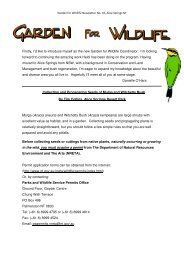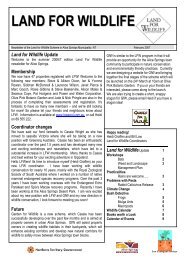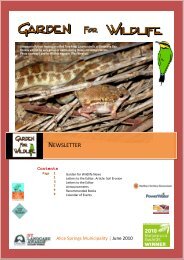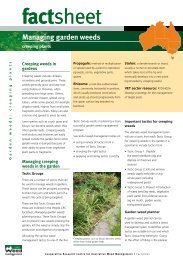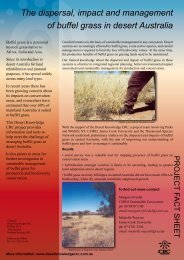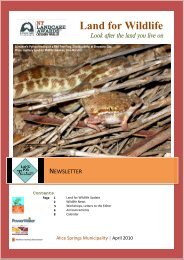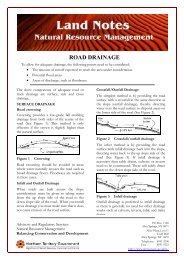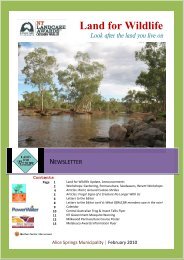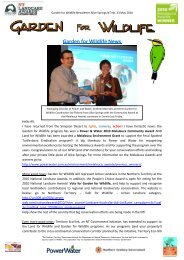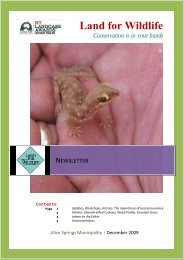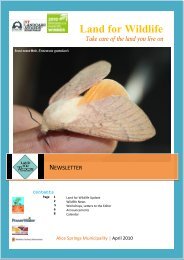Identifying Nests, Tracks, Scats, Burrows, & Other Signs
Identifying Nests, Tracks, Scats, Burrows, & Other Signs
Identifying Nests, Tracks, Scats, Burrows, & Other Signs
You also want an ePaper? Increase the reach of your titles
YUMPU automatically turns print PDFs into web optimized ePapers that Google loves.
Hopping Mouse tracks are very like miniature kangaroo tracks when they<br />
run, but normal foraging speed leaves elongated hind foot and short hand<br />
print tracks (left). Pictured below are tracks left by a running gait, note only<br />
two prints left by the hind feet.<br />
Bilby: Below. Note the long toes. The two front feet are behind and the two back feet are parallel in<br />
front where the animal has leaped off its back feet to land on its front feet in the next group of<br />
tracks.<br />
<strong>Scats</strong><br />
Photo: Hayley Michener<br />
Macropod: <strong>Scats</strong> of kangaroos, wallabies, hare-wallabies are usually deposited as separate pellets in<br />
groups of four to eight. They can be oval, round or square depending on the species. Red kangaroo<br />
scats taper to a point at one end, while Euro scats are squared at both ends and Rock Wallaby<br />
droppings are short elongated ovals with a tip on each end. When the pellets are broken you can see<br />
they are made up of plant matter. This can be a useful way to identify the macropod, as some prefer<br />
soft grasses, or will browse on bushes and trees. The scats pictured above are likely Euro droppings<br />
from a young Euro.



